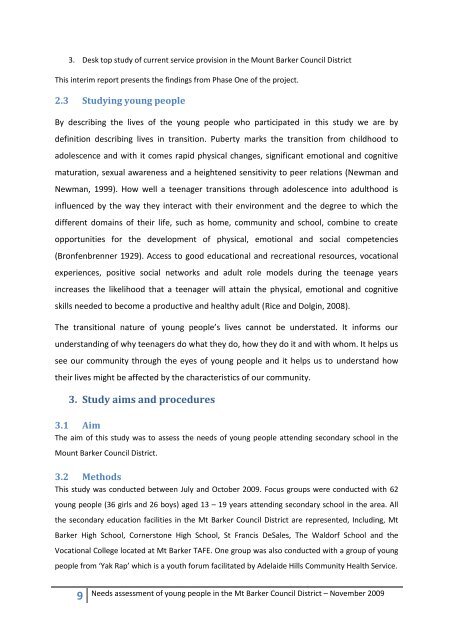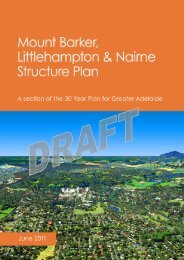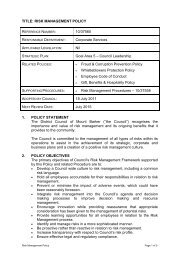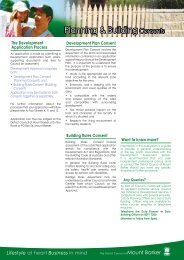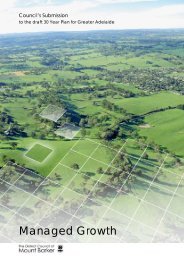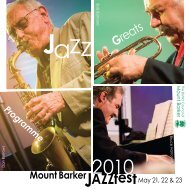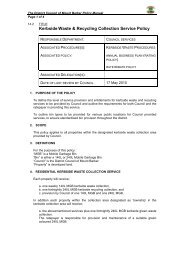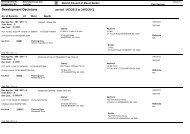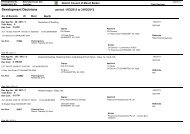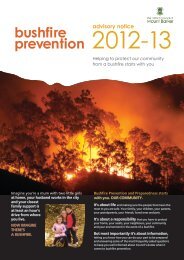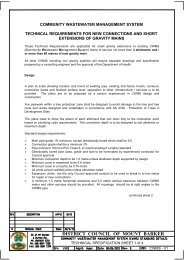Youth Research Qualitative Report - District Council of Mount Barker
Youth Research Qualitative Report - District Council of Mount Barker
Youth Research Qualitative Report - District Council of Mount Barker
Create successful ePaper yourself
Turn your PDF publications into a flip-book with our unique Google optimized e-Paper software.
3. Desk top study <strong>of</strong> current service provision in the <strong>Mount</strong> <strong>Barker</strong> <strong>Council</strong> <strong>District</strong><br />
This interim report presents the findings from Phase One <strong>of</strong> the project.<br />
2.3 Studying young people<br />
By describing the lives <strong>of</strong> the young people who participated in this study we are by<br />
definition describing lives in transition. Puberty marks the transition from childhood to<br />
adolescence and with it comes rapid physical changes, significant emotional and cognitive<br />
maturation, sexual awareness and a heightened sensitivity to peer relations (Newman and<br />
Newman, 1999). How well a teenager transitions through adolescence into adulthood is<br />
influenced by the way they interact with their environment and the degree to which the<br />
different domains <strong>of</strong> their life, such as home, community and school, combine to create<br />
opportunities for the development <strong>of</strong> physical, emotional and social competencies<br />
(Bronfenbrenner 1929). Access to good educational and recreational resources, vocational<br />
experiences, positive social networks and adult role models during the teenage years<br />
increases the likelihood that a teenager will attain the physical, emotional and cognitive<br />
skills needed to become a productive and healthy adult (Rice and Dolgin, 2008).<br />
The transitional nature <strong>of</strong> young people’s lives cannot be understated. It informs our<br />
understanding <strong>of</strong> why teenagers do what they do, how they do it and with whom. It helps us<br />
see our community through the eyes <strong>of</strong> young people and it helps us to understand how<br />
their lives might be affected by the characteristics <strong>of</strong> our community.<br />
3. Study aims and procedures<br />
3.1 Aim<br />
The aim <strong>of</strong> this study was to assess the needs <strong>of</strong> young people attending secondary school in the<br />
<strong>Mount</strong> <strong>Barker</strong> <strong>Council</strong> <strong>District</strong>.<br />
3.2 Methods<br />
This study was conducted between July and October 2009. Focus groups were conducted with 62<br />
young people (36 girls and 26 boys) aged 13 – 19 years attending secondary school in the area. All<br />
the secondary education facilities in the Mt <strong>Barker</strong> <strong>Council</strong> <strong>District</strong> are represented, Including, Mt<br />
<strong>Barker</strong> High School, Cornerstone High School, St Francis DeSales, The Waldorf School and the<br />
Vocational College located at Mt <strong>Barker</strong> TAFE. One group was also conducted with a group <strong>of</strong> young<br />
people from ‘Yak Rap’ which is a youth forum facilitated by Adelaide Hills Community Health Service.<br />
9<br />
Needs assessment <strong>of</strong> young people in the Mt <strong>Barker</strong> <strong>Council</strong> <strong>District</strong> – November 2009


